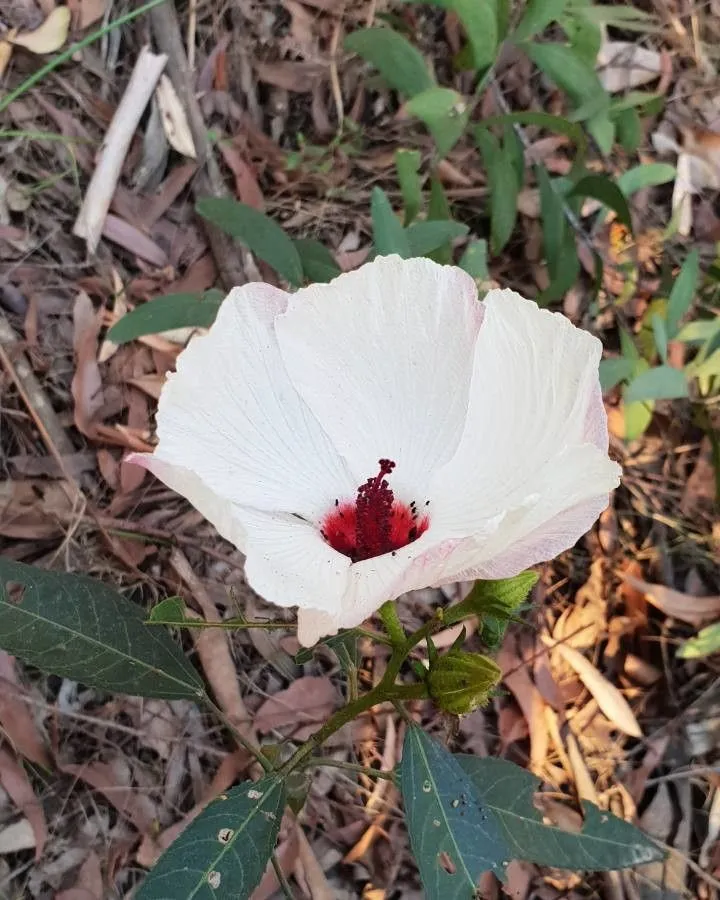
Author: Vent.
Bibliography: Jard. Malmaison 2: ad t. 103. 1805
Year: 1805
Status: accepted
Rank: species
Genus: Hibiscus
Vegetable: False
Observations: NW. & E. Australia
The Queensland-sorrel, known scientifically as Hibiscus heterophyllus, is a remarkable plant native to the northwestern and eastern regions of Australia. Belonging to the family Malvaceae, this species is noted for its striking and distinctive features that make it a notable member within its native habitat.
Hibiscus heterophyllus is appreciated for its vibrant and large flowers, which can display a rich spectrum of colors ranging from white to varying shades of pink and yellow. These blooms are not only a visual delight but also play a significant role in attracting pollinators, thereby contributing to the ecological balance in its natural surroundings.
The plant exhibits a diverse range of leaf shapes, a characteristic alluded to in its scientific name “heterophyllus”. This variability in foliage adds to its aesthetic appeal and highlights the plant’s adaptability to different environmental conditions within its distribution range in Australia.
As a member of the Malvaceae family, the Queensland-sorrel shares common traits with other hibiscus species, including the presence of a sturdy, woody stem and a predisposition for rapid growth under suitable conditions. This resilience and robust nature make it a favored choice for gardeners and horticulturists aiming to introduce a touch of Australian flora to their landscapes.
Documented as early as 1805 in “Jard. Malmaison,” courtesy of the author Vent., Hibiscus heterophyllus has garnered attention for over two centuries, signifying its longstanding importance and admiration within botanical studies. The plant’s enduring appeal stems not only from its stunning floral display but also from its practical utility in traditional and contemporary horticulture.
Overall, the Queensland-sorrel embodies the unique botanical richness of Australia, representing both the aesthetic beauty and ecological significance of the continent’s flora. Cultivating Hibiscus heterophyllus offers an opportunity to appreciate and conserve a species that vividly illustrates the diversity of plant life in its native habitats.
En: Queensland-sorrel, Green kurrajong, Native rosella, Sorreltree
Taken Sep 7, 2022 by Sakkie Janse van Rensburg (cc-by-sa)
Taken Nov 5, 2022 by Dawn Hendrick (cc-by-sa)
Taken Nov 15, 2020 by Jian Chen (cc-by-sa)
Taken Aug 2, 2022 by Kath Little (cc-by-sa)
Taken May 2, 2020 by Lorenzo (cc-by-sa)
Taken Apr 17, 2022 by Sakkie Janse van Rensburg (cc-by-sa)
Taken Aug 2, 2022 by Kath Little (cc-by-sa)
Taken Aug 27, 2022 by f v (cc-by-sa)
© copyright of the Board of Trustees of the Royal Botanic Gardens, Kew.
© copyright of the Board of Trustees of the Royal Botanic Gardens, Kew.
© copyright of the Board of Trustees of the Royal Botanic Gardens, Kew.
Family: Myrtaceae Author: (F.Muell.) K.D.Hill & L.A.S.Johnson Bibliography: Telopea 6: 402 (1995) Year: 1995 Status:…
Family: Rubiaceae Author: Pierre ex A.Froehner Bibliography: Notizbl. Bot. Gart. Berlin-Dahlem 1: 237 (1897) Year:…
Family: Sapindaceae Author: Koidz. Bibliography: J. Coll. Sci. Imp. Univ. Tokyo 32(1): 38 (1911) Year:…
Family: Asteraceae Author: A.Gray Bibliography: Pacif. Railr. Rep.: 107 (1857) Year: 1857 Status: accepted Rank:…
Family: Fabaceae Author: Medik. Bibliography: Vorles. Churpfälz. Phys.-Ökon. Ges. 2: 398 (1787) Year: 1787 Status:…
Family: Aspleniaceae Author: (Cav.) Alston Bibliography: Bull. Misc. Inform. Kew 1932: 309 (1932) Year: 1932…